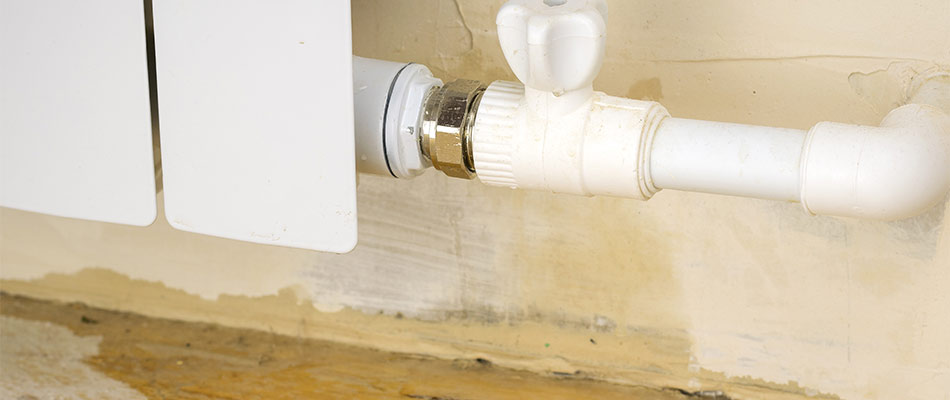Listed here below you will find additional superb facts related to Leaking water lines.

Early discovery of dripping water lines can reduce a potential calamity. Some small water leakages may not be visible.
1. Check Out the Water Meter
Every home has a water meter. Examining it is a proven manner in which assists you find leaks. For starters, turn off all the water sources. Ensure no one will certainly flush, use the tap, shower, run the cleaning maker or dishwasher. From there, most likely to the meter as well as watch if it will certainly change. Given that nobody is utilizing it, there must be no motions. If it moves, that shows a fast-moving leakage. If you detect no adjustments, wait an hour or 2 and check back once more. This means you may have a sluggish leakage that can also be underground.
2. Examine Water Intake
If you detect unexpected modifications, in spite of your intake being the exact same, it means that you have leaks in your plumbing system. An abrupt spike in your costs suggests a fast-moving leak.
Meanwhile, a constant boost every month, despite having the very same practices, reveals you have a slow leakage that's likewise gradually escalating. Call a plumber to extensively check your home, especially if you really feel a cozy location on your flooring with piping below.
3. Do a Food Coloring Test
When it comes to water consumption, 30% comes from toilets. If the color in some way infiltrates your bowl throughout that time without flushing, there's a leakage between the container as well as dish.
4. Asses Exterior Lines
Do not neglect to inspect your outside water lines too. Examination spigots by connecting a yard hose pipe. Should water leak out of the link, you have a loose rubber gasket. Replace this as well as make sure all links are limited. If you've got an automatic sprinkler, it will certainly aid get it properly examined and preserved each year. One tiny leakage can throw away lots of water and also spike your water expense.
5. Evaluate and also Evaluate the Scenario
House owners should make it a routine to examine under the sink counters and even inside cupboards for any bad odor or mold and mildew development. These 2 red flags indicate a leak so punctual focus is called for. Doing routine inspections, also bi-annually, can save you from a significant issue.
Check for discolorations and also deteriorating as most pipelines and also appliances have a life span. If you think leaking water lines in your plumbing system, do not wait for it to intensify.
Early detection of dripping water lines can reduce a prospective catastrophe. Some small water leakages might not be visible. Inspecting it is a guaranteed means that assists you uncover leakages. One tiny leak can squander lots of water and increase your water expense.
If you suspect dripping water lines in your plumbing system, do not wait for it to escalate.
Tips for Detecting Hidden Plumbing Leaks
Check for Signs of Water Damage
We recommend that you check the following places for evidence of water damage:
Near where you store your water heater
Around your sump pump
In areas where pipes are visible
Underneath cabinetry or a vanity beneath a sink
Where your outside hose bib isIf water damage is present, you may also notice mold and/or mildew or smell a foul or musky odor. You might also be able to hear the sound of water running where it shouldn’t be.
Perform a Water Meter Test
One of the easiest ways to determine whether you have a hidden leak on your property is to test your water meter. Turn off all appliances in that use water and make sure you don’t have any faucets running. Locate your water meter and record the reading on it. Continue to leave everything off for a minimum of two hours and then go back and see the meter reading. If it’s a noticeable difference, chances are you have a hidden plumbing leak.
Monitor Your Outside Usage
As the seasons change, you might use more water to keep your yard lush and green and your flowers blooming. However, it’s important to routinely ensure that your sprinkler or irrigation system is working properly and that any outside faucets are completely off. This way you’re not wasting any water.
Do the Toilet Food Coloring Test
Are you kept up at night because your toilet continues to run? If you’ve noticed your toilet randomly refills, especially when it’s not in use, it could mean you have a defective flapper tank and water will leak into the bowl. Fortunately, there’s an easy (and kind of fun!) way to test whether you’re dealing with this issue. Grab some food coloring and add a few drops into your toilet’s tank. Wait 15 minutes and then check to see whether the water in the bowl is colored. If it is, you have a leak within your toilet and the internal assembly will need to be repaired or replaced.
https://www.carterservices.com/blog/2020/february/tips-for-detecting-hidden-plumbing-leaks/

We were made aware of that write-up about Top leak detection hacks through an acquaintance on a different web blog. Do you know somebody else who is curious about the topic? Take a moment to promote it. We treasure reading our article about Locating water leaks.